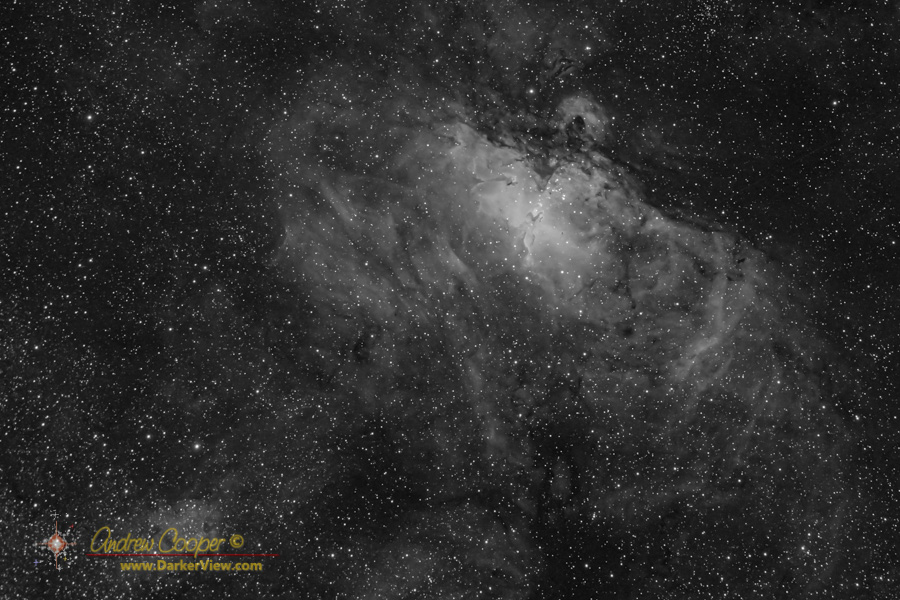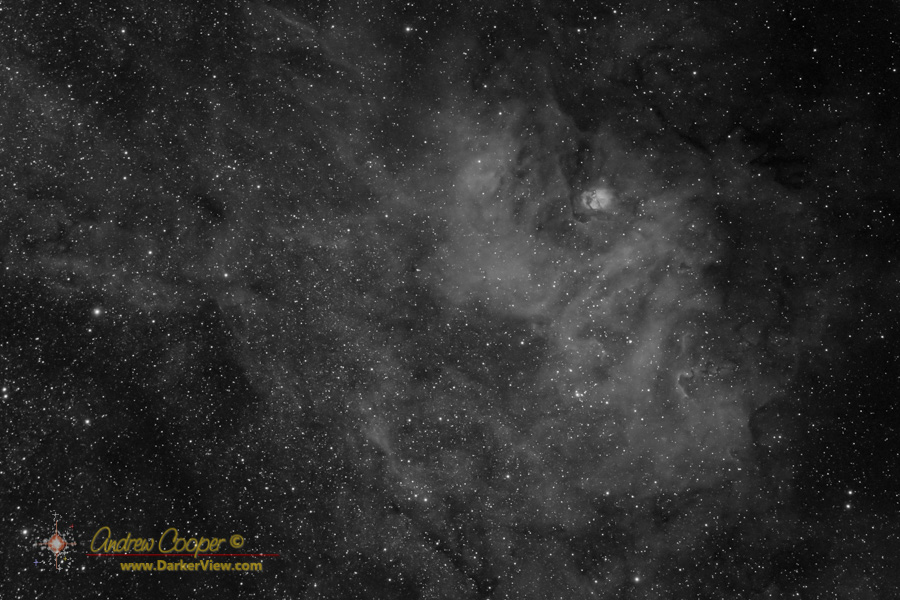I have been processing more images from this last week. This one is another classic nebula, the Eagle. The nebula, also known as M16 or NGC 6611 can be found in thick regions of of our galactic core towards the constellation of Serpens.
The eponymous eagle can be seen near the center of the brightest region, a structure of darker material likely held together by the gravity of objects inside it. In this case those objects would be forming stars, or protostars, the result of the dust and gas being drawn together under the influence of gravity.
I have a full set of color filters, once I have had fun re-doing many of these classic nebulae in hydrogen alpha I will probably begin doing full color versions. Color takes a lot more exposure time and much more processing. There are techniques to add H-alpha data to an RGB image to get more definition in the nebula structure, something I have not done and should probably figure out.


